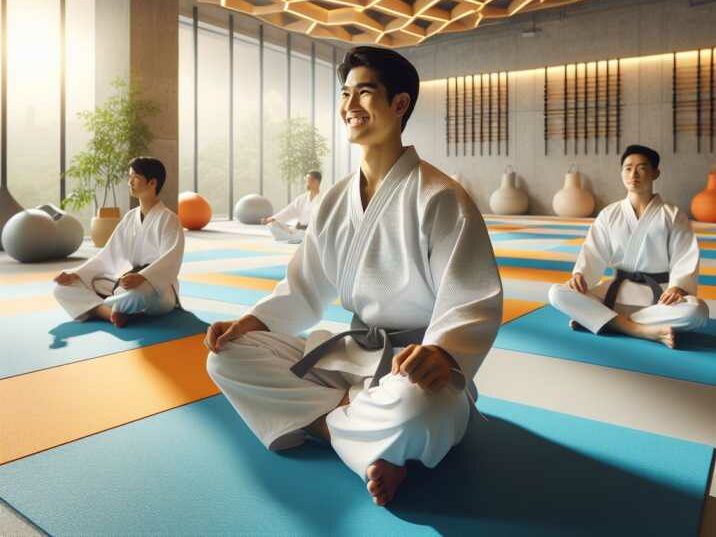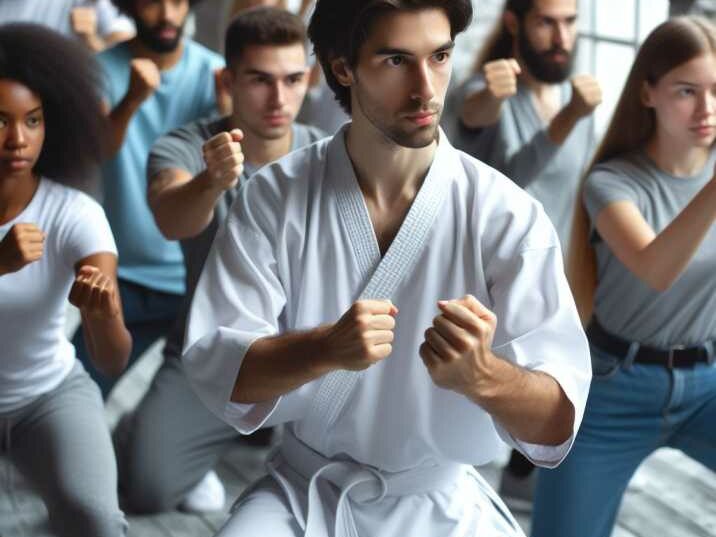Introduction:
Table of Contents
In recent years, there has been a growing interest in exploring alternative therapies and activities to support individuals and Kung Fu for Autism Spectrum Disorder (ASD). One such avenue gaining attention is the adaptation of martial arts, particularly Kung Fu, to meet the unique needs of individuals on the spectrum. While traditionally seen as a form of self-defense and physical fitness, Kung Fu offers a range of benefits that extend beyond the physical realm. In this article, we delve into the possibilities of adapting Kung Fu for Autism Spectrum Disorder Individuals, exploring its potential to enhance physical coordination, cognitive abilities, and overall well-being.

The Benefits of Kung Fu for Autism Spectrum Disorder Individuals:
Physical Coordination and Motor Skills Enhancement:
Kung Fu involves a series of precise movements and techniques that require focus, balance, and coordination. For individuals with ASD, who may experience challenges in these areas, practicing Kung Fu can help improve motor skills and enhance overall physical coordination. Through repetitive practice of forms and exercises, individuals can develop better control over their movements, leading to increased confidence and independence.
Improved Focus and Concentration:
One of the hallmark characteristics of ASD is difficulty in maintaining attention and focus. Engaging in Kung Fu training requires participants to concentrate on specific movements, follow instructions, and stay attentive to their surroundings. Over time, individuals with ASD can experience improvements in their ability to focus and sustain attention, both during martial arts practice and in other areas of their lives.
Emotional Regulation and Self-Control:
Many individuals with ASD struggle with emotional regulation and managing impulses. Kung Fu provides a structured environment where practitioners learn to channel their energy in constructive ways, fostering self-discipline and self-control. By practicing techniques such as breathing exercises and meditation, individuals can develop coping strategies to better manage stress and anxiety.
Social Interaction and Communication Skills:
Participating in a Kung Fu class offers opportunities for individuals with ASD to engage in social interaction and peer relationships. Through partner drills, group activities, and shared experiences, participants learn to communicate effectively, collaborate with others, and develop a sense of camaraderie. These social interactions can contribute to improved social skills and self-confidence.
Empowerment and Self-Confidence:
One of the most profound benefits of practicing Kung Fu for individuals with ASD is the sense of empowerment and accomplishment it brings. As individuals master new techniques, overcome challenges, and progress through their training, they experience a boost in self-esteem and self-confidence. This newfound confidence can extend beyond the martial arts studio, positively impacting various aspects of their lives.
Adapting Kung Fu for Autism Spectrum Disorder:
Adapting Kung Fu for individuals with ASD involves tailoring teaching methods, curriculum, and training environments to accommodate their unique needs and preferences. Here are some strategies for making Kung Fu more accessible and inclusive for individuals on the autism spectrum:
Visual Supports:
Incorporate visual aids such as pictures, diagrams, and video demonstrations to supplement verbal instructions and help individuals understand and remember techniques more effectively.
Structured Routine:
Establish a predictable and structured routine for each class session, including warm-up exercises, skill drills, and cool-down activities. Consistency and predictability can help individuals with ASD feel more comfortable and engaged in the learning process.
Sensory Considerations:
Be mindful of sensory sensitivities and provide accommodations such as noise-reducing headphones, sensory-friendly materials, and designated quiet areas for individuals who may be sensitive to loud noises or crowded spaces.
Individualized Instruction:
Recognize that each individual with ASD is unique and may have different strengths, challenges, and learning styles. Provide individualized instruction and support to accommodate diverse needs and preferences.
Positive Reinforcement:
Use positive reinforcement techniques such as praise, encouragement, and rewards to motivate and reinforce desired behaviors and achievements. Celebrate progress and milestones to foster a sense of accomplishment and pride.

Table of Information Kung Fu for Autism Spectrum Disorder:
| Benefit | Description |
|---|---|
| Physical Coordination and Motor Skills Enhancement | Practice of precise movements and techniques improves motor skills and coordination. |
| Improved Focus and Concentration | Engaging in Kung Fu training enhances attention and concentration abilities. |
| Emotional Regulation and Self-Control | Structured environment fosters self-discipline and coping strategies for managing emotions. |
| Social Interaction and Communication Skills | Opportunities for peer interaction and collaboration contribute to improved social skills. |
| Empowerment and Self-Confidence | Mastery of techniques and progress through training boost self-esteem and confidence. |
Conclusion:
In conclusion, the adaptation of Kung Fu for Autism Spectrum Disorder Individuals holds tremendous potential for enhancing physical, cognitive, and emotional well-being. By incorporating tailored teaching methods, providing a supportive learning environment, and focusing on individual strengths, individuals with ASD can experience the myriad benefits of practicing martial arts. As awareness and understanding of the unique needs of individuals with ASD continue to grow, so too does the opportunity to unlock their full potential through innovative and inclusive approaches like adapted Kung Fu training.
Frequently Asked Questions (FAQs):
- Can individuals with ASD participate in regular Kung Fu classes?
- While individuals with ASD can certainly participate in traditional Kung Fu classes, adapting the curriculum and teaching methods may enhance their overall experience and learning outcomes.
- Are there specific styles of Kung Fu that are more suitable for individuals with ASD?
- There is no one-size-fits-all answer to this question, as suitability may vary depending on individual preferences and needs. However, styles that emphasize slow, controlled movements and mindfulness techniques may be particularly beneficial.
- How can parents support their child with ASD in Kung Fu training?
- Parents can support their child by encouraging participation, communicating with instructors about their child’s needs, and providing positive reinforcement and encouragement throughout their martial arts journey.
- Are there any safety considerations to keep in mind when teaching Kung Fu to individuals with ASD?
- Safety is paramount in any martial arts training environment. Instructors should be mindful of potential sensory sensitivities, physical limitations, and communication challenges, and adapt training accordingly to ensure a safe and supportive experience for all participants.
- What are some additional benefits of adapting Kung Fu for individuals with ASD?
- In addition to the physical, cognitive, and emotional benefits mentioned earlier, adapted Kung Fu training can also foster a sense of belonging, community, and empowerment for individuals with ASD, helping them thrive both on and off the mat.

